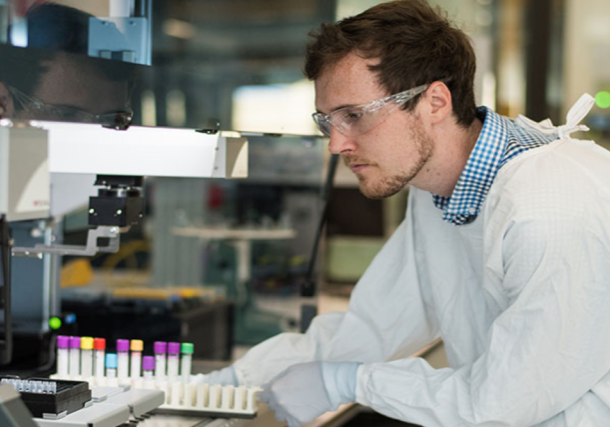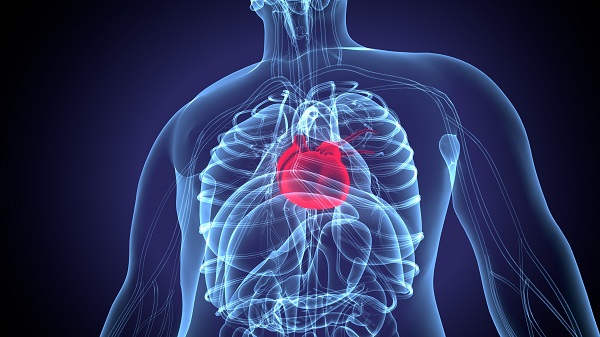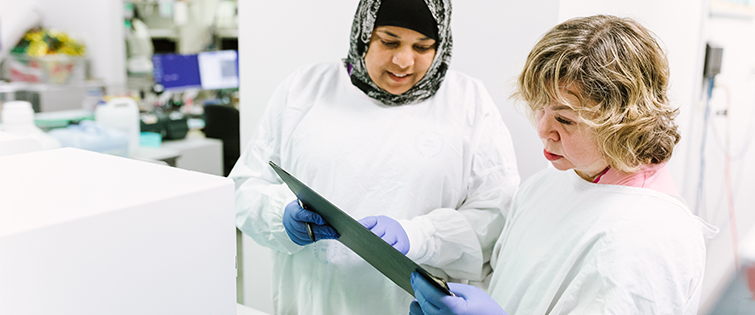Banking on early diagnosis and treatment
“By discovering novel markers and mechanisms for disease, we have the opportunity to act early and prevent heart attacks, and that’s a very exciting thing,” says Professor Gemma Figtree.

Bio-specimens securely stored at the NSW Health Statewide Biobank hold the key to revolutionising diagnosis and treatment for some of our most vexing medical conditions.
The 45 and Up Study and Bio-HEART-CT are typical of the major longitudinal research projects that rely on large bio-specimen collections to track population trends and the progress of health conditions over time. The biobank’s resources and expertise ensure those samples are available to science today and well into the future.
“These public health studies involve large cohorts and long-term bio-specimen storage,” says Professor Jennifer Byrne, Director of Biobanking with NSW Health Pathology, which manages the largest biobank in the Southern Hemisphere. “The biobank is pleased to be maintaining stable collections on their behalf and supporting this important work.”
Health and ageing under the microscope
In the case of the 45 and Up Study, Australia’s largest ongoing study of health and ageing, that means safely storing more than 5000 bio-specimens – and counting. Managed by the Sax Institute this study brings together researchers and a broad range of stakeholders and partners such as the Cancer Council NSW, Heart Foundation, NSW Health, NSW Department of Communities and Justice and Australian Red Cross Lifeblood; in a bid to better understand the factors that promote good health and wellbeing over a lifetime.
Since 2005 researchers have been regularly surveying 267,000 people from a diverse range of cultural and economic backgrounds, including Aboriginal and Torres Strait Islander people and those living in rural and remote areas, as well as individuals in good health and those with multiple chronic conditions.
Details gathered are linked to what their bio-specimens (mostly blood samples, but also saliva) reveal, then coupled with geospatial data to enable comparisons between geographical areas. A complex picture is emerging that is helping to unravel the interactions between lifestyle factors, health and genetics.
“We have 5000 bio-specimens banked and about 1100 have undergone genome sequencing to date,” says Dr Kerrin Bleicher, Director of Research Assets with the Sax Institute. “The biobank collection is ever-growing and vital to this integrated research.”
But the long-term benefits will not be confined to 45 and Up. The world-class dataset has already been used by over 800 researchers across 90 organisations for sub-studies of a broad range of health issues, including diabetes, cancer, obesity, mental health, environmental health, and health service access and equity.
“Approved researchers can select bio-specimens relevant to their research and will be able to explore interactions between genotypes and phenotypes many years into the future,” Bleicher says. “The biobank enables us to put DNA and other bio-specimens safely aside for later use. Then 45 and Up Study researchers can explore the impact of hormones and genetics on conditions that may appear years after the bio-specimens were collected.
“We not only have 15 years of phenotype data, but all the genotype data – the genetics, hormones and other things – we extract from bloods.”
Better still, all the records of a person’s past and current health, medication, treatment, diagnostics and use of health services are captured as the 45 and Up researchers link NSW Health data through the Centre for Health Record Linkage (CHeReL), along with commonwealth datasets.

Getting to the heart of cardiovascular disease
Shedding fresh light on the leading cause of death in Australia – cardiovascular disease – is demanding a similarly concerted effort from the Bio-HEART-CT research team. Led by Professor Gemma Figtree, from the University of Sydney, it is looking for novel markers in the blood and mechanisms that identify people with atherosclerosis (coronary artery disease) well before they suffer a heart attack or cardiac arrest.
Cardiovascular disease accounts for about one-third of deaths worldwide and, in Australia, is estimated to cost the economy $7.7 billion each year, not to mention the emotional toll.
Figtree and her team have recruited 3200 study participants, 600 of whom have had a heart attack. Images are taken of their coronary arteries and blood samples are collected to enable screening at the molecular level.
“We have found that up to 27% of heart attack patients have no cardiovascular risk factors,” Figtree says. “We are looking at the patient’s entire biology to try to explain individual susceptibility and resilience, beyond traditional factors.”
While the major risk factors for cardiovascular disease – hypertension, diabetes mellitus, hyperlipidaemia and smoking – have long been known, we are yet to understand why some individuals with the risk factors are susceptible and others are not.
Figtree and her team are determined to discover new biomarkers to support early diagnosis and personalised preventative therapies.
“We are doing this by applying complex network and machine learning to the biological and clinical datasets (blood samples and CT imaging),” Figtree says. “Our aim is to pull out the signatures of those molecules that reflect the disease state of the individual.”
Growing interest in the Bio-HEART-CT study may see the original aim of recruiting 5000 participants grow to 20,000 patients. It promises to expand, exponentially, a range of cardiovascular investigations.
“At the moment, when anyone goes for their regular cardiac check, the only thing their GP has to look at is their cholesterol levels, blood pressure and clinical history,” Figtree says. “We want to identify a marker that is reflective of their early disease presence and susceptibility, so we can give effective treatment and prevent heart attacks.
“A lot of people have tried to find this Holy Grail, but they have largely been informed by blood taken from people who have had a heart attack. We are trying to pick up those who have the early stages of the disease.”

Targeted treatments and better health
In both the 45 and Up and Bio-HEART-CT studies, bio-specimens stored at the NSW Statewide Biobank are critical to improving disease diagnosis and medical interventions.
“Better identifying people at risk enables us to target those who need more screening, and to tailor medicines to fight or even prevent a particular condition,” says Dr Kerrin Bleicher. “That’s a very powerful opportunity for research and researchers.”
Figtree agrees. “By discovering novel markers and mechanisms for disease, we have the opportunity to act early and prevent heart attacks, and that’s a very exciting thing,” she says.
Updated 3 years ago